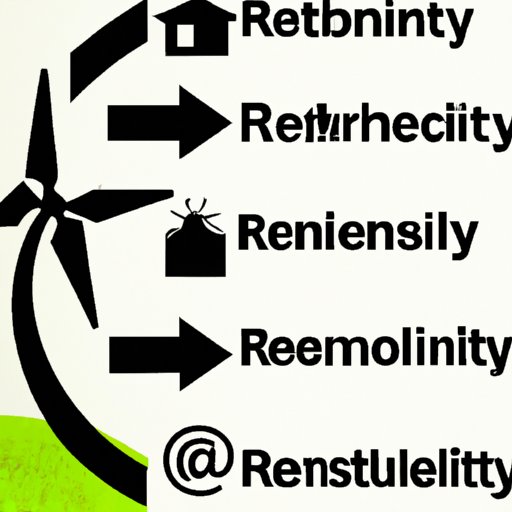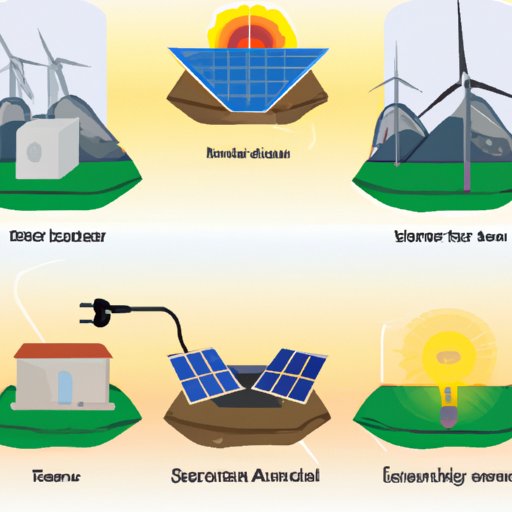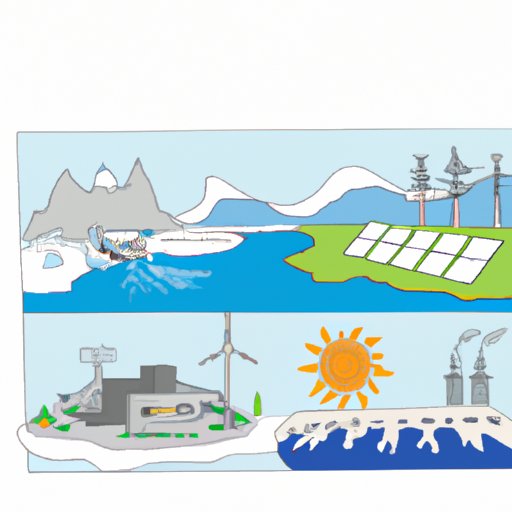Introduction
Renewable energy technology is an umbrella term that refers to any form of energy source that is naturally replenished over time. This includes solar, wind, hydropower, biomass, and geothermal energy sources. The purpose of this article is to explore the advantages and challenges of renewable energy technology, as well as its impact on our environment, the different types of renewable energy sources, opportunities for job growth, and potential future advancements.

Benefits of Renewable Energy Technology
Renewable energy technology offers many benefits, including cost savings, a cleaner environment, and increased efficiency. By using renewable energy sources, households and businesses can reduce their dependence on fossil fuels, which are more expensive and produce harmful emissions. Additionally, renewable energy sources often require less maintenance than traditional energy sources, making them more efficient and cost-effective in the long run.

The Different Types of Renewable Energy Technology
There are several types of renewable energy technology available today. Solar energy involves capturing the sun’s rays and turning them into electricity. Wind energy uses turbines to capture the kinetic energy of the wind and turn it into electricity. Hydropower utilizes the force of moving water to generate electricity. Biomass is organic matter, such as wood or agricultural waste, that is burned to create heat or electricity. Finally, geothermal energy uses the natural heat from the earth to provide heating and cooling, as well as generate electricity.
How Renewable Energy Technology Impacts the Environment
One of the most significant benefits of renewable energy technology is its positive impact on the environment. Renewable energy sources produce significantly fewer emissions than traditional energy sources, reducing air and water pollution. Additionally, by relying more heavily on renewable sources, we can reduce our reliance on fossil fuels, which are non-renewable and have a negative impact on the environment.
Challenges and Opportunities for Renewable Energy Technology
Although renewable energy technology offers many benefits, there are still some challenges associated with its implementation. One of the biggest challenges is the lack of infrastructure needed to support renewable energy sources. Additionally, the initial costs of investing in renewable energy technology can be high, and there are often regulatory issues that must be addressed. On the other hand, renewable energy technology offers many opportunities for job growth in fields such as research, engineering, and construction.
Innovative Uses of Renewable Energy Technology
In addition to traditional uses of renewable energy technology, there are many innovative applications being developed. For example, water treatment systems are using renewable energy technology to filter and purify water more efficiently. Smart grids are using renewable energy sources to optimize energy distribution. And desalination plants are using renewable energy technology to convert seawater into freshwater.

The Future of Renewable Energy Technology
As renewable energy technology continues to advance, its use is becoming increasingly widespread. With continued advancements in technology and innovation, the use of renewable energy sources will continue to grow. Additionally, governments around the world are beginning to invest in renewable energy infrastructure, further expanding its reach. As a result, renewable energy technology has a bright future ahead.
Conclusion
Renewable energy technology offers many advantages, including cost savings, a cleaner environment, and increased efficiency. There are various types of renewable energy sources, each of which has a positive impact on the environment. However, there are still some challenges associated with implementing renewable energy technology, such as lack of infrastructure and high initial costs. Despite these challenges, renewable energy technology continues to advance, and its use is becoming increasingly widespread. The future of renewable energy technology looks bright, with continued technological advancements and increased investment in renewable energy infrastructure.
In summary, renewable energy technology is an important part of creating a cleaner, more sustainable future. Its advantages far outweigh its challenges, and with continued innovation and investment, it will become an even more integral part of our lives. Now is the time to embrace renewable energy technology and take advantage of its many benefits.
(Note: Is this article not meeting your expectations? Do you have knowledge or insights to share? Unlock new opportunities and expand your reach by joining our authors team. Click Registration to join us and share your expertise with our readers.)
